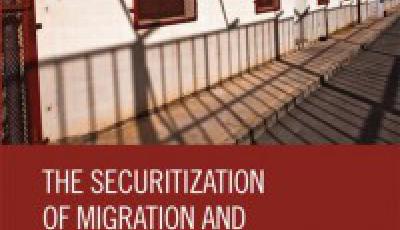‘The Securitization of Migration and Refugee Women’: Qualitative Research with Somali Women in Malta
Posted:
Time to read:
Guest post by Alison Gerard, Senior Lecturer and Discipline Coordinator of Justice Studies, School of Humanities and Social Sciences, Charles Sturt University. In this post, Alison discusses her new book, published in 2014 by Taylor & Francis.

The Securitization of Migration and Refugee Women is a book that speaks to the humanized and gendered impact of policies that foster ‘Fortress Europe’ and the exclusion of racialized populations seeking refugee protection in the European Union. This book centres the experiences of Somali refugee women who have arrived in Malta. Since the early 2000s, this part of the central Mediterranean has formed a new frontline in the quest to secure the EU’s borders against unauthorized migrants, many of whom are asylum seekers.
Through qualitative research, the gendered impact of the securitization of migration is revealed across four key stages of the now common and dangerous refugee journey: the departure from Somalia; transit through North Africa; arrival in Malta; and finally, onward migration to continental Europe and North America. Participants’ narratives detail the myriad of ways in which women resist the undermining of their agency and mobility, and negotiate the types of punishment administered upon arrival in Malta.
This book argues that despite the Maltese government having over 10 years of experience in receiving transnational migrants by boat, Maltese asylum seeker policy is still predominantly reactive. Further, Malta’s geostrategic position in protecting the rest of the EU from ‘unwanted’ migrants impacts how securitization practices are adopted by the Government and experienced by those who seek asylum at the margins of the EU.
Some of the main findings outlined in the book are:
- The securitization of migration has created new gendered ‘border existences’ characterized by punishment, and propel migrants across borders.
- The strength of ‘push’ factors at the key stage of exit illuminates the futility of deterrence policies that continue to be a staple of securitization of migration practices.
- A strong relationship exists between the sites of women’s experiences of violence en route to the EU, and efforts under the guise of ‘externalization’ to secure the EU’s external borders.
- Gender inequalities are reproduced by border controls during transit. Women are targets for sexual violence by guards or private militia, and sexual violence or the provision of sexual services is often the border toll paid to negotiate border-crossing.
- Survival in Malta is shaped by a hostile political and social environment that militates against integration and participation in the formal economy and daily life in Malta. The humanized impact of securitization is gendered and entails partial and piecemeal legal status; poverty and isolation; and deteriorating physical and mental health.
- The mental health of transnational migrants deteriorates upon arrival in Malta as a consequence of poor living conditions and an uncertain future due to diluted legal protections.
- Until recently, detention centres in Malta were not gender segregated. The conditions in detention form the context in which forced pregnancies occur, as well as the use of pregnancy as a means of being transferred to another, albeit relatively improved, form of containment.
- The Dublin II Regulation is functioning as an internal deportation system from northern Member States to less well-resourced Member States along the southern border. Further, Dublin II disrupts onward migration and leads to punishment upon return to Malta.
- Women denied refugee protection become effectively ‘stuck’ in Malta, unable to move either forwards or backwards due to the lack of readmission possibilities with Somalia. ‘Stuck’ in Malta without work rights or an adequate government allowance, women are driven into the informal economy and exposed to exploitation and risk.
The book doesn't showcase the solidarity groups in Malta supporting and advocating with transnational migrants for social justice. However, the research presented seeks to challenge the dominant discourses on asylum that bear a very tenuous connection to the lived realities of those seeking asylum. The research objective was not to universalize or generalize the accounts presented here to reflect all refugee women’s experiences. Rather, the research entailed a focused qualitative study of the experiences of a number of refugee women.
Any thoughts on this? Post a comment here or on our Facebook page. You can also tweet us.
__________
How to cite this blog post (Harvard style): Gerard A (2014) ‘The Securitization of Migration and Refugee Women’: Qualitative Research with Somali Women in Malta. Available at: http://bordercriminologies.law.ox.ac.uk/securitization-of-migration-and-refugee-women/ (accessed [date]).
Share:








